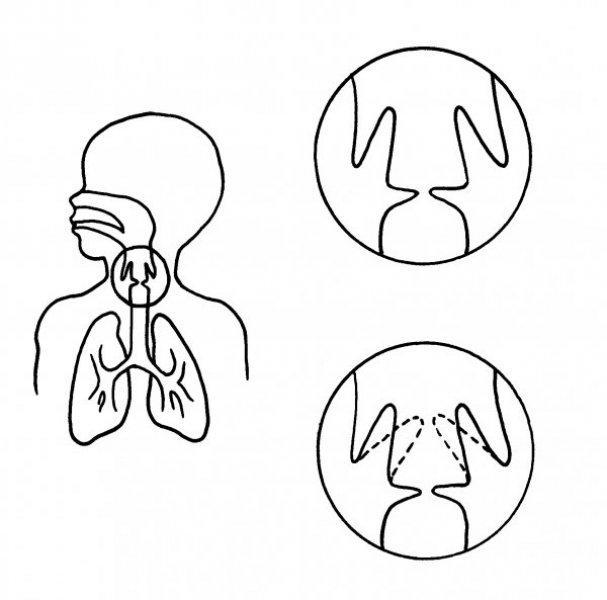
Image: www.michealmillerprojects.com via Google 9/29/12
We will briefly explore a common concern associated with noisy breathing in infants, medically termed, Laryngomalcia.
Laryngomalcia, from its name suggests a softening of sorts involving portions the upper airway structures anatomically known as the larynx. This part of the respiratory system houses the vocal cords and adjacent structures, all of which play a key role in inspiration, expiration and phonation (the generation of sound). Laryngomalacia as a diagnosis is often made by clinical assessment in the newborn period and requires a careful examination of the presenting and associated symptoms along with examination by your physician before the diagnosis is made. It is one of the probable causes of noisy breathing in the newborn period. Associated structural or functional problems may make the presentation worse and these require additional diagnostic evaluation involving a specialist..
Most newborns however have this as an isolated condition. The noisy breathing is usually worse during the inspiratory portion of the breathing cycle and during feeding. The nosiy sound generates anxiety with parents and comes to clinical attention as a result. Laryngomalacia is most common in the first few weeks of life and may worsen through the fourth month of life before improving spontaneously towards the end of the first year of life. The cartilage (flexible plastic like consistency tissue- similar to consistency of the ear) supporting the structures of the upper airway inevitably thicken with age and attenuate the likelihood of collapse with the negative pressures generated during inspiration as shown in the image above which is what allows air to flow into the babies lungs down that pressure gradient. This partial collapse is one of the reasons why the noisy sound is “guttural” and frightening to the observer. Other structural or functional problems affecting the upper airway may also predispose to this like problems affecting the nervous system and moderate to severe reflux of stomach contents periodically, otherwise known as gastroesophageal reflux.
Affected infants with mild presentation show no other signs of illness or disease and thrive and grow well. Time and close physician follow up is the best treatment for mild cases of Laryngomalacia. More severe cases would require evaluation by an otolaryngologist especially if other signs of illness accompany the presentation. An endoscopy view of the upper airway is usually the first step.
